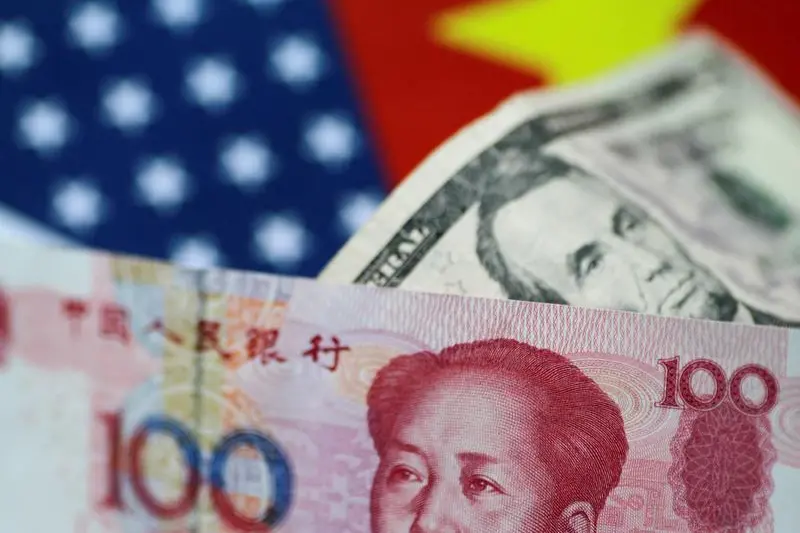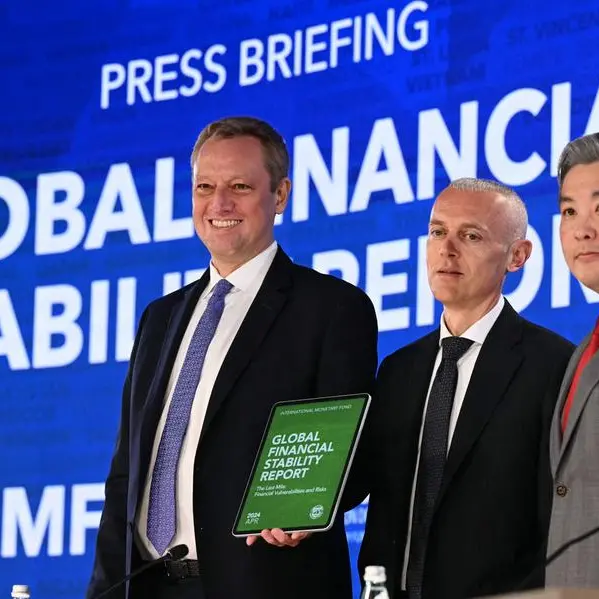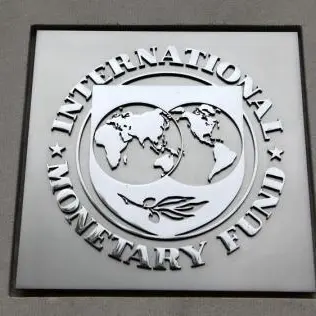PHOTO
SHANGHAI - China cut its new one-year benchmark lending rate for the second month in a row on Friday, a step by the central bank to try to wrestle down borrowing costs and support the economy as the Sino-U.S. trade war drags on.
But the move was far more cautious than easing by the U.S. Federal Reserve and the European Central Bank over the past week, suggesting Chinese policymakers remain reluctant to join a global stimulus wave due to worries about mounting debt.
Still, analysts say Beijing's restraint is being put to the test, as worsening economic data in August has raised fears that third-quarter growth could slip below 6%, breaching the lower end of the government's 2019 target.
Many China watchers believe more forceful measures will be needed soon to avoid a sharper slowdown and get the economy back on an even keel.
As widely expected, China's new Loan Prime Rate (LPR) -- for banks' best customers -- was cut 5 basis points (bps) at Friday's monthly fixing to 4.2%, the second time it has been trimmed since it was revamped in August, and days after the central bank's latest reduction in banks' reserve requirements (RRR) took effect.
Total reductions in the rate so far, at 11 bps, are less than half of the Fed's quarter-point rate cut on Thursday, which some analysts say reflects policymakers' concerns that lower rates could lead to property bubbles and add to financial risks.
The five-year benchmark rate, which is likely to be used for mortgages, was left unchanged at 4.85%.
"Since the new rate is relatively untested, the PBOC (People's Bank of China) appears to be taking a measured approach at first," Julian Evans-Pritchard, senior China Economist at Capital Economics, said in a note.
"However, with economic activity likely to come under further pressure in the coming quarters and monetary easing so far failing to generate much of a pick-up in credit growth, we think the PBOC will need to start engineering larger declines before long."
While small, the latest cut signals to markets that policymakers remain open to further easing, some analysts said.
REFORMS TO BRING RATES DOWN OVER TIME
China's central bank has been struggling to bring down financing costs for years, particularly for small, private companies which generate a large share of country's economic activity and jobs. But such firms are considered bigger credit risks, and banks have long favoured state-backed enterprises.
In long-awaited interest rate reforms, the PBOC designated the LPR as its benchmark for new loans last month to guide borrowing costs lower, though the previous benchmark lending rate will still apply to older loans for a while longer.
The new reference rate is set by 18 banks, and is loosely pegged to the rate on the central bank's medium-term lending facility (MLF), now at 3.3%.
Still, economists believe the central bank plays a key role behind the scenes in adjusting the LPR.
"The LPR is based on banks’ quotations. If there is no government intervention, it’s hard to believe banks are willing to lower their quotations, because corporate demand for loans is not weak at all," said Luo Yunfeng, an analyst at Merchants Securities in Beijing, noting that lower rates also mean smaller profit margins.
A PROTECTION STORY
Iris Pang, Greater China economist for ING in Hong Kong, said Friday's rate move "is not a growth-stimulation story, I think it is more a protection story, to not fall into a weaker growth range. Growth has been very weak and this is more for lowering interest costs for production and infrastructure."
A more effective way to reduce borrowing costs would be for the PBOC to directly cut MLF rates, said Tang Jianwei, analyst at Bank of Communications (BoComm), saying "more loosening is highly necessary because the economy is sluggish."
The PBOC last cut the MLF rate in early 2016, and its policy benchmark rate in 2015. But the latest RRR cuts have taken those levels to the lowest since 2007.
Wen Bin, an economist at Minsheng Bank in Beijing, also said China needs to cut interest rates further, and by the same margin as the Fed.
"That will help stabilise market expectations, investment, consumption and will not put pressure on the exchange rate."
Wang Yifeng, analyst at Everbright Securities, forecast another 5-10 bps fall in the LPR in November, as the long-running trade war takes a deeper toll.
(Reporting by Samuel Shen and John Ruwitch; Additional reporting by Tom Westbrook in Singapore, Noah Sin in Hong Kong and Kevin Yao in Beijing; Editing by Richard Borsuk & Kim Coghill) ((samuel.shen@thomsonreuters.com; +86 21 20830018; Reuters Messaging: samuel.shen.thomsonreuters.com@reuters.net))












